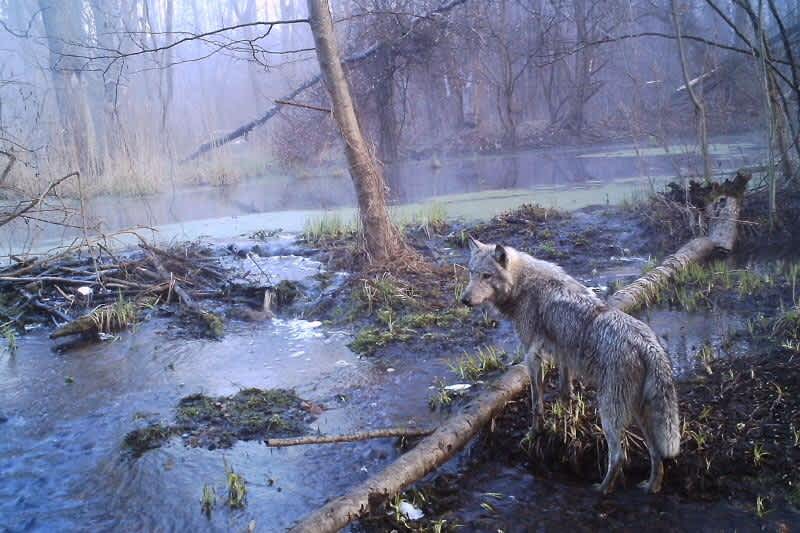Study: Wolves Have Taken Over the Chernobyl Exclusion Zone
OutdoorHub Reporters 10.07.15

Nearly three decades after the Chernobyl nuclear incident in Ukraine, wildlife have returned to reclaim the 1,000-square mile Exclusion Zone near the Belarus border. In place of the people who once inhabited the zone, wild boar, elk, and deer now wander through the empty buildings of Pripyat and neighboring villages. Wolves especially seem to have come to dominate the landscape. According to researchers studying animal activity in the zone, wolf populations are about seven times higher than nearby nature preserves, and now the predators are undeniably on the top of the food chain.
“It was a primordial experience,” radioecology expert Tom Hinton told The Washington Post. “That dates back to when humans were prey.”
Hinton and his fellow researchers recently published their findings in the journal Current Biology. The team claimed that after years of human absence, the Chernobyl Exclusion Zone has turned into what they call a wildlife haven. Bears and bison have returned naturally, while other large mammals have also moved in to take advantage of the fenced-off landscape. According to Jim Smith, a professor at the University of Portsmouth who co-wrote the study, the initial effects from the reactor explosion in 1986 were not as harmful to wildlife as initially believed.
“Whatever negative effects there are from radiation, they are not as large as the negative effects of having people there,” he told the New Scientist. “We’re not saying there weren’t radiological effects at all, but we can’t see effects on populations as a whole.”
Smith added that the creation of the exclusion zone inadvertently created a protected wildlife reserve that rivaled and in some ways surpassed other preserves in the area. According to Jim Beasley with the University of Georgia, the same effect is currently being seen near the Fukushima power plant in Japan, which suffered its own accident in 2011.
“After the accident, regardless of any potential effects of radiation that may have existed, our data show fairly clearly populations of these large mammals increased fairly quickly once you removed humans from the landscape and they are currently maintained at reasonably high abundances,” Beasley told the Daily Mail.
Chernobyl animals thrive without humans http://t.co/pAcm0srrpI "now teeming with elk, deer & wolves" #rewilding pic.twitter.com/dlB8yCFu44
— Straitgate Action Gp (@straitgateactgp) October 6, 2015
To gauge the status of wildlife within the zone, researchers and officials from Belarus counted tracks from 2008 to 2010. There were a number of animal deaths in the immediate aftermath of the explosion, including miscarriages and birth defects caused by highly toxic isotopes. Over time, wildlife populations rebounded and adapted to their new environment, although scientists say that it is still too soon for animals to have developed radiation resistance. The study by Hinton and his team is the first real look into how wildlife are coping with the decades-long nuclear disaster, and for the most part, they have thrived. Scientists estimate that just about every animal population in the zone doubled by 2010.
That is not to say that the Exclusion Zone is safe. Even researchers traveling through the area have to take great care when working inside the zone. Hinton added that the team also did not study sickness in individual animals, so it may be possible that while populations have increased, the individual health of wildlife has decreased. Data gathered by other research teams show that the soil near Chernobyl is still radioactive—and experts can only guess at what kind of molecular-level damage the radiation has inflicted on the zone’s burgeoning wildlife populations.

